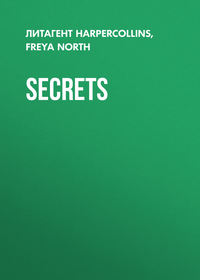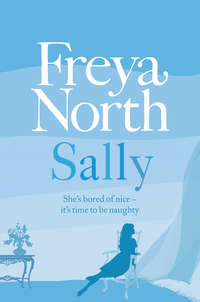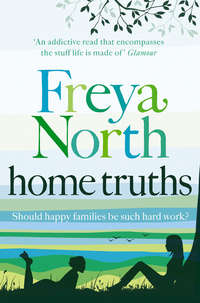
Полная версия
Pillow Talk
‘Mrs McNeil,’ Petra said slowly, not turning around, still transfixed by the painting, ‘I’ve just got it!’
‘You shouldn’t use the word “got”, you know,’ said Lillian, ‘or “get”. It’s lazy.’
‘I mean, I’ve just figured it out!’ Petra qualified, her eyes still on the painting. Slowly, she turned, her face flushed with excitement. She walked across the room, towards Lillian and went to the watercolour of Kilimanjaro which hung by the front door and which she’d admired on her first visit. ‘This is Mount Kilimanjaro,’ she said, then walked over to the colourful abstract in oils which had so mesmerized her. ‘And this is, too!’
Lillian McNeil regarded her, steadily but expressionless. It didn’t matter to Petra.
‘All these times I’ve been here, in your home, I thought this painting was just a gorgeous colourful explosion of colours and shapes. You know, abstract art. I thought maybe it symbolized fire and light and atmosphere – a bit like Joseph Mallord William Turner who we’ve been doing in art.’ Petra stared at the picture. ‘But I didn’t realize it was real,’ she whispered. ‘Hang on – I’ve lost it!’ She fell silent. ‘Here!’ She traced her finger over the coloured shapes to denote the form. ‘It’s real, isn’t it – it’s Kilimanjaro. But to me, it looks like Kilimanjaro is on fire!’
‘It is,’ Lillian said softly, a little sadly. She paused. Then she straightened herself and smiled. ‘That painting was done over twenty-five years ago, Petra, and it appears you and I – and one other, who is no longer with us – are the only people to recognize its true subject matter. Most people think it’s a colourful pastiche of Clyfford Still.’
‘Who?’
‘You’ll learn. In art.’
‘But it isn’t.’
‘No, it isn’t. It’s by Hector McNeil. My late husband. He painted that. He painted it for me. We loved Tanzania. We lived there, happily, with Kili as our magnificent backdrop. More than a backdrop. That mountain was our everything.’
Instinctively, Petra went over to the chair in which she always sat and nodded gratefully as Lillian poured the tea. She placed the cup and saucer carefully on her knee and sipped daintily. She was sure such manners were the outcome of taking one’s tea in a bone-china cup and saucer. At home, there were only clunky Denby mugs.
‘Is the fire real or abstract?’ Petra asked. ‘Did the mountain really catch fire, when you were there?’
Lillian poured tea for herself, settled into her chair. ‘Legend has it that a great fire struck the mountain and that is what Hector’s painting celebrates. Fire needn’t necessarily destroy, Petra dear. Fire can reveal. Fire can create. Fire was the reason we came to be in Tanzania.’
Though Petra meant to sip, in her excitement it turned into a slurp. ‘Sorry,’ she said.
‘Actually, the story starts a fair few years before the fire, Petra,’ Lillian began, ‘585 million years ago to be precise, when the continents collided in the pan-African event and caused a geological phenomenon. There, you can knock your geography teacher for six when you go back to school.’
‘What was the phenomenon?’
‘A most beautiful and rare gemstone was born.’
Petra’s glance ricocheted from the watercolour of Kilimanjaro by the door, to the vibrant oil of the mountain on fire across the room.
‘Have you heard of the Masai?’ Lillian asked her.
‘Of course,’ said Petra, ‘we did them in geography last term. We watched a video and our teacher brought in real Masai beads. I wore the bangle all lesson.’
‘A Masai legend tells of how a lightning bolt struck Kilimanjaro, setting the mountain ablaze and creating a magic fire in the sky. When the flames died down, glistening amongst the ash were stones of the most amazing array of blues: royal blue, midnight blue, indigo, periwinkle, lavender, blue-violet, violet-blue, pure violet. You see, the conditions had to be right those millions of years ago for the gem to be born and then, many millennia later, conditions had to be right for its existence to be revealed.’
‘Wow,’ said Petra. ‘Is it a sort of diamond then?’
‘It’s actually a thousand times rarer than diamond, Petra. And that’s a fact.’
‘Sapphire?’
‘No – it is the colour sapphire wishes it could be.’
‘What is it?’
‘It is tanzanite.’
‘Tanzanite?’ The word was lovely on the tongue.
‘And in just a few decades or so, there will be no more tanzanite. At all. It will be gone.’
‘Gone? Forever? Why?’
‘Because the only place in the whole world where it exists is a three-mile zone in the foothills of Kilimanjaro – the Umba Valley, the area outside Arusha in the Merelani Hills.’
Petra looks up from her lap to the wall opposite her bed where the abstract oil painting of Kilimanjaro ablaze hangs. She smiles, a little sadly. Dear dear Lillian McNeil. Petra takes the tanzanite and lays it between her index and middle fingers. Even in the dim of her bedroom in the middle of the night, the stone resounds with colour and hue; deep brilliant blue one way, glimpses of vivid violet the other. She can hear Mrs McNeil’s voice, as clear as if she is sitting beside her, alive still.
‘A Masai warrior I knew told me that if you look into the heart of tanzanite and see through to its soul, you see the colour of Kilimanjaro through the morning haze – which no paint, no pigment can replicate.’

Petra looks at her clock, surprised to see it is almost two in the morning. She looks at her tanzanite. Soon enough, there will be no more tanzanite. Anywhere in the world. Diamonds are forever, tanzanite is not. And she keeps hers under her mattress. She humps the mattress on top of all the paperbacks. She checks her mobile phone. The screen is still blank. Poor old Rob. What a thing to have to work so late.
Chapter Ten
‘Are you going to tell?’
Paul Glasper forsook the history A level essays he had settled down to mark, to pose the question to Miranda Oates in an excitable whisper, as if it was the juiciest secret to hit the school.
‘What? Tell what?’ asked Nigel Garton as he came into the staff room, as bleary-eyed as the pupils to whom he’d just taught double physics.
‘Who?’ Arlo Savidge asked, a step behind him. ‘Tell what who when?’
Paul held his hands up. ‘It’s not for me to say,’ he said with a slow and obvious wink to Miranda who rolled her eyes and flicked him a ‘V’ with her fingers.
Miranda shrugged. ‘I’m going for a job interview.’
‘A job?’ said Nigel. ‘What sort of job?’
‘A teaching job, of course.’
‘But you already have a teaching job,’ said Nigel.
Miranda shrugged. ‘Head of English.’
‘You’re Head of English here, aren’t you?’ Arlo said.
‘Yes, but I don’t want to base my entire career here at Roseberry Hall. Unlike you two.’
She looked at them while they looked at each other, baffled.
‘Don’t know why not,’ Nigel muttered, a little affronted.
‘It’s easy to forget that there’s life outside Roseberry Hall,’ Miranda said.
‘But isn’t the sense of belonging, of community, the point, surely?’ said Arlo.
‘You sound like the school’s prospectus,’ Miranda said. ‘Anyway, how about “Good luck, Miss Oates”?’
‘Good luck, Miss Oates,’ Nigel said flatly.
‘Good luck,’ said Arlo, ‘of course good luck. But you’d be sorely missed if you left.’
Paul noticed how a sparkle enlivened Miranda’s eyes, that the smile she shot over to Arlo was laced with a glance of hope.
Roseberry Hall was not a large school in terms of population, but in terms of acreage it was vast. The estate was contained, yet also heralded, by the original fine stone wall, something of a rarity in the hedge-bound locality. It was some eight feet high, crowned every few yards by a small decorative turret echoing those which were a feature of the Hall itself. From a distance and depending on the time of year, ramblers walking the Norse Lyke Wake Walk could look down on the Roseberry Hall estate in its entirety; from that perspective, the buildings and grounds and the wall running the entire perimeter resembled a well-constructed sandcastle complex. The eighteenth-century Hall itself, with its turrets and thick-silled casement windows and magnificent arched doorway, managed to be imposing in its grandeur without being intimidating. The founder of the school, Radcliff Lawrence Esq., a wealthy philanthropist whose special interests were education and architecture and the consequences of the one on the other, was sensitive to the effect that entering through that portal could have on a schoolboy. Lawrence believed that a school’s job was to teach by nurturing, not by fear. A child will not want to learn in a building he is intimidated to enter; but if the building inspires awe then the passage to the classroom will be an eager one. Lawrence’s ethos has lasted as well as the buildings themselves and to this day, despite the school being called Roseberry Hall Public School for Boys, the pupils themselves continue to be known as Radcliff Lawrencers.
It wasn’t a league-topping school in terms of academic excellence but in terms of producing well-mannered, bright and confident boys, it was exemplary. Everyone who worked there and every parent who paid handsomely for a son to be educated there, understood this to be the higher point. Roseberry Hall wasn’t about bullying astronomical grades out of the boys nor was it about saturating Oxford and Cambridge universities with alumni. Rather, the school was about not forcing a child to learn but inspiring them to want to listen. David Pinder, headmaster for over two decades, would reiterate in every speech he gave – to the boys, the parents, the governors, his staff – ‘Manners Maketh Man: our pupils join us as boys and leave us as fine young men, fully equipped to deal with the world at large.’ It was a proclamation that could be repeated by rote – by parents, pupils, governors and the staff alike. As if carrying Radcliff Lawrence’s torch, Mr Pinder, with his jolly demeanour and ebullient commitment to the school, instilled in everyone connected with Roseberry Hall his belief that the school occupied an important and enviable niche within the British public boarding-school system. For the staff and the three hundred and fifty boys from the ages of eleven to eighteen, no one could doubt that the school also occupied a privileged niche of English countryside. Tucked safely and scenically into genteel grassland at the foot of the North York Moors, the school was positioned twenty minutes from stunning coastal scenery yet just a short journey to many of the most picturesque villages in the area. The lie of the land was perfect for sports: manicured pitches within the school’s grounds opening out to serious cycling and running country. It was as if Roseberry Hall sat in state, receiving the varied gifts of the region. Depending on the weather conditions, even the plumes and fugs of effluence, the occasional colossal flares from the monstrous ICI works stretching for miles like a space-age city outside Middlesbrough, were considered to add drama and aesthetic intrigue to the big skies above the school.
The demarcation of work and rest was another of Radcliff Lawrence’s philosophies, thus schooling was contained in either the main Hall itself or in the newer science block built sympathetically from local stone with a more modern take on the turret emblem. The boys were lodged in five accommodation houses with sizeable apartments for the housemaster or mistress and their families, and lesser apartments for their deputies. The rest of the staff were scattered through the grounds, either in annexes, or in quirky little turreted follies just large enough to comprise a living room, kitchenette, small bedroom and compact shower room. Miranda Oates had a folly. Paul Glasper was deputy housemaster of Armstrong House. Nigel Garton’s rooms were part of the pavilion on the sports field. Arlo had a folly. Steven Hunter, the art teacher, lived above the decidedly grand boat-house. David Pinder resided in the headmaster’s house, an ornate turreted cottage that looked a little like a cake. After prep each evening, the Hall was shut, as if it was as important for the building to have a rest from the scamper and flurry of school-time as it was for the community to have a break from school. If the staff wanted a place other than their private quarters to spend their evenings, they used the Old Buttery, a self-contained building whose atmosphere was part staff room, part den. It was a healthy mix of shabby old leather suites and a huge plasma screen; Cook’s home-made cakes and the staff’s lethal home-brew. The evening of Miranda Oates’s interview, fortunately a Friday night, the Old Buttery was heaving with her colleagues glad of the excuse to test Barrel number 4 which had been fermenting since the New Year.
Конец ознакомительного фрагмента.
Текст предоставлен ООО «ЛитРес».
Прочитайте эту книгу целиком, купив полную легальную версию на ЛитРес.
Безопасно оплатить книгу можно банковской картой Visa, MasterCard, Maestro, со счета мобильного телефона, с платежного терминала, в салоне МТС или Связной, через PayPal, WebMoney, Яндекс.Деньги, QIWI Кошелек, бонусными картами или другим удобным Вам способом.









